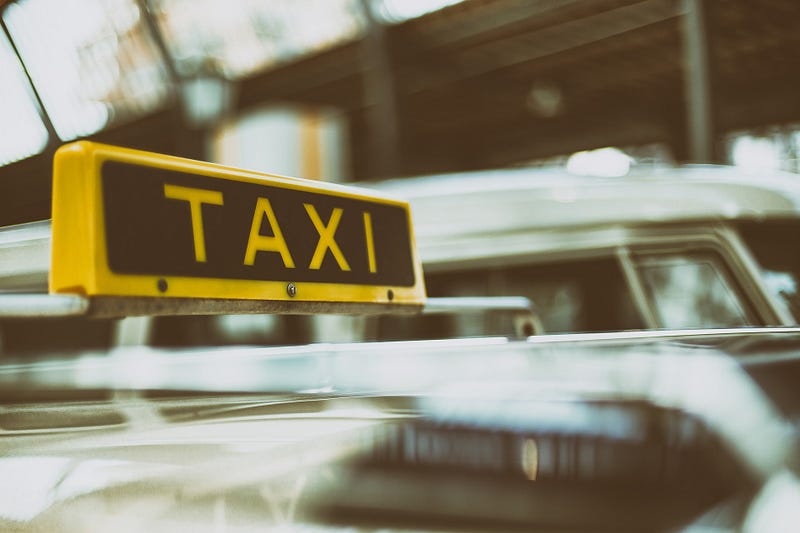No more taxi queues

I got wet last night. Really wet. So wet that my shoes are still sodden this morning. Which is a problem, because I’m in a hotel and I only brought one pair.
I’m at Cambridge University for a panel on the future of mobility, bringing together futurists, designers, energy and policy specialists to understand the direction of travel, if you’ll forgive the pun.
The irony of arriving at such an event, my shirt translucent from the water, looking like I’d just emerged Darcy-like from a lake, because of a lack of transport from the station, was not lost on me. Nor was the evidence it provided for what is wrong with our current mobility systems, particularly when affected by inclement weather.
Walking not waiting
The first thing I noticed when leaving the station was an enormous queue of people waiting to get into a taxi. One that stretched well beyond the available shelter. The queue of taxis waiting to pick them up was relatively much smaller. The line of people was barely moving at all because of the time taken to get people into the taxis and for the taxi to move off was so long.
I quickly decided that I would get just as wet walking as waiting.
Once I saw the traffic down the main street, I was fairly confident this was the right decision. Only bicycles were making any real progress, but with the pouring rain and darkness this felt like a hazardous mode of transport. I could have caught a bus, if I could have worked out which one to board, but again that would have meant waiting: in line in the rain, then inside in the traffic.
As I approached my destination I came across a taxi rank. Full of cars. And with no-one queuing.
By this point it was too late.
Three changes
It could have been so different.
Information about train arrivals and their likely cohort of disembarking passengers, is not difficult to acquire. Provisioning sufficient cars to collect all those wanting them should be relatively straightforward, given the caveat below.
As should creating a boarding system that doesn’t introduce so many delays.
The caveat is that you can only provision cars that can make it back to the station through the traffic to pick up new passengers having deposited their previous fare. How do you solve the traffic issue? Take a lot of the private cars off the road and hand the piloting of all vehicles over to connected intelligences. They will speed flow, eliminate blocking behaviours, and ensure the traffic keeps moving.
Technical reality, human possibility
All of this could be made real tomorrow. Nothing I have described is unfeasible with today’s technology. We are the only barriers to making it happen. Not without good reason, in some respects.
We like control. It’s hard to hand trust over to machines that will, inevitably, fail at some point and cause injury and death. But I can tell you now: they will save many, many more lives than they take.
We like ownership. Of our vehicles, our portable palaces, particularly. Though I think this feeling is in decline. I still love what cars represent but I am less and less attached to the hunk of metal on my driveway, choosing to travel by bike, bus or train at every opportunity.
I don’t think I’m alone.
Even those who love their cars increasingly choose to rent them, in one form or another, rather than buy them outright. This is one important mental step along the way to accepting mobility as a service rather than as a poorly-utilised asset.
There are clear job implications for replacing drivers with machines. There are around 300,000 taxi drivers in the UK. Tens of thousands of bus drivers (I couldn’t find a good figure for this but it’s fair to guess it’s a multiple of the 36,000 buses).
There’s also the issue of a loss of stories. How would I have started this blog post if every journey is smooth, perfect and efficient? It seems a frivolous point in the face of the above, but there’s a lot to be said for the variety and narrative value of our lives.
Slow not stop
These things only affect when the change will come. The future is pretty certain at this point: we will hand control of our mobility over to machines. They will be more efficient. They will be safer. The orders of magnitude improvements in safety, cost, time loss, and pollution, make it inevitable.
Human factors will slow this transition. But they will not stop it.
